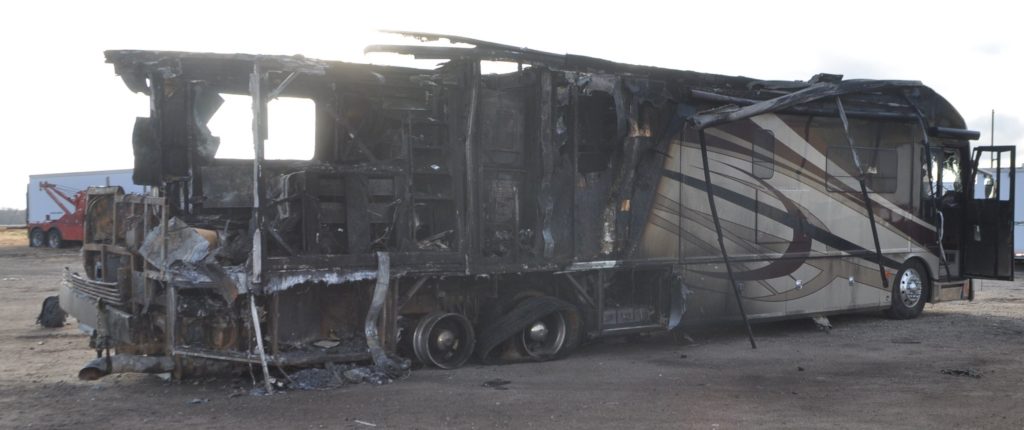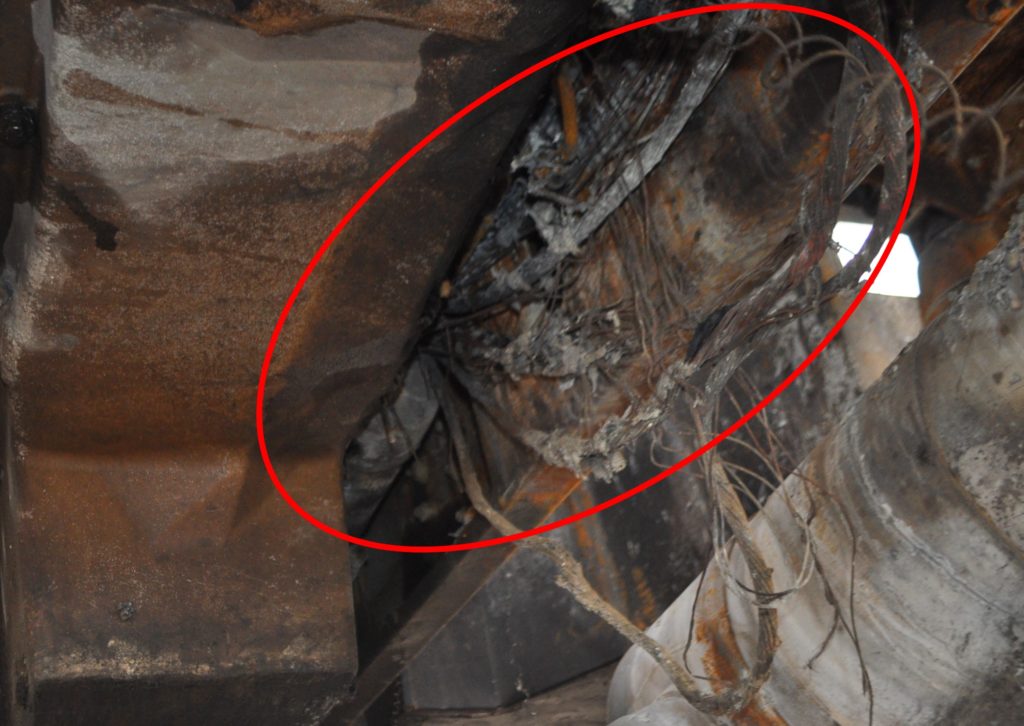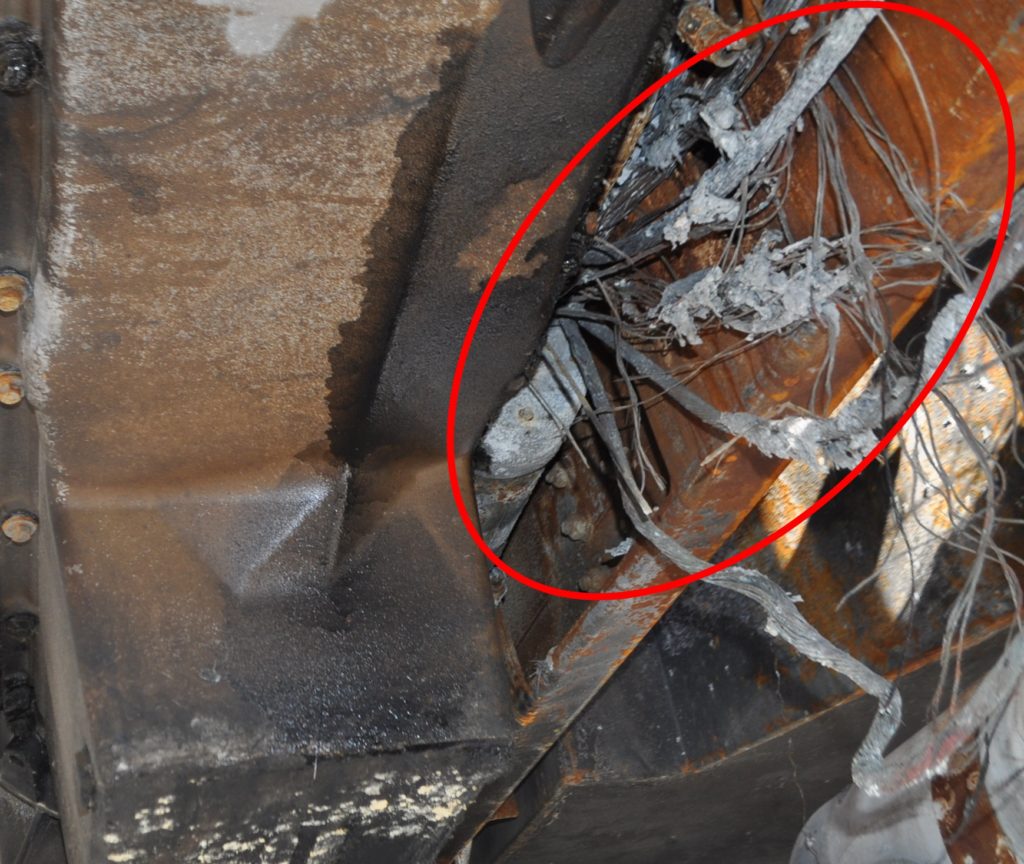
Knott Laboratory provides forensic engineering and animation, Civil & Structural, and Fire & Explosion Investigation services to reconstruct accidents.
Problem Solved: Vehicle Fire Origin & Cause

Problem: What was the true origin and cause of the fire that burned this RV?

Fire patterns are the identifiable shapes formed and left behind on the remnants of a fire and are essential to investigators when determining the origin and progression of a fire. Once the origin has been established, the cause of the fire can be evaluated. But what if the fire patterns change with time?
There are many types of fire patterns such as charring, material loss, melting, and oxidation which can be used to define an area of origin. Oxidation, in fires, is caused by the heating of steel components. The iron within the steel oxidizes and changes color and appears as rust. Oxidation patterns can be very useful because they not only indicate areas of high heat but can also indicate heat differentials. However, oxidation patterns can increase and change with time and exposure to moisture and oxygen. It is very useful to inspect fire scenes with oxidized steel soon after a fire has occurred.
Knott Lab fire investigators inspected a combination RV and Jeep fire in November of 2016, approximately ten days after the fire had occurred. Through fire pattern and fire progression analysis, Knott determined the fire started low on the rear driver’s side of the RV adjacent to the engine. Knott’s origin determination was largely dependent on the oxidation patterns soon after the fire as they were low to the ground and upwind of the more damaged passenger’s side. Within this origin, Knott identified a leaking transmission line that was dripping on the adjacent hot exhaust, and it was this transmission fluid that caught fire.

Approximately 4 months after the fire, multiple parties performed another inspection of the vehicle. By this point, the oxidation throughout the underside of the vehicle was more pronounced. Many of the other investigators determined the area of origin was near the electrical components and not near the exhaust on the opposite side of the engine. Knott provided our original photographs to those investigators. Once reviewing these photographs, all investigators updated their origin of the fire to match ours.


